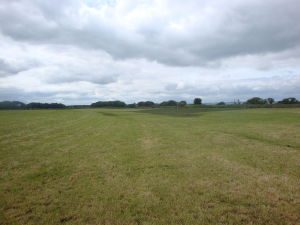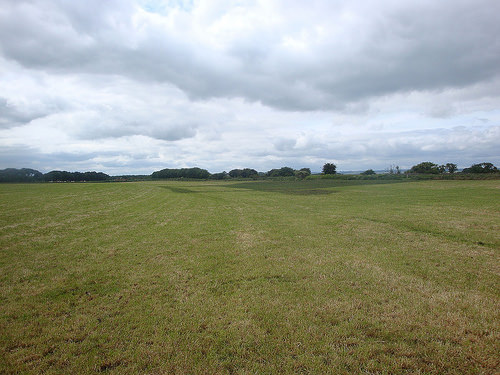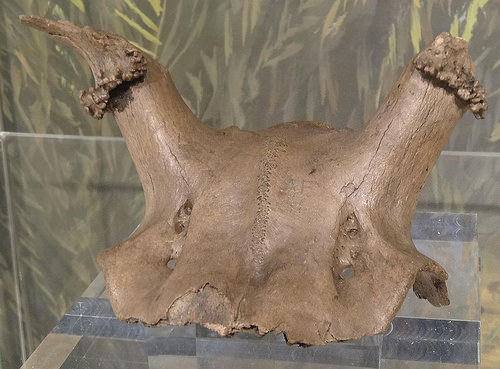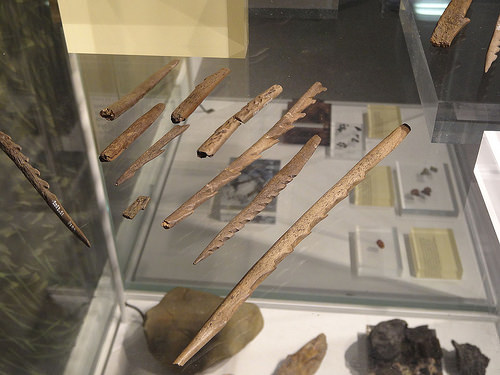
The artwork on the tiny fragile pendant, uncovered by a research team from the Universities of York, Manchester and Chester, is the earliest known Mesolithic art in Britain. Crafted from a single piece of shale, the subtriangular three-millimetre thick artefact measuring 31mm by 35mm contains a series of lines which archaeologists believe may represent a tree, a map, a leaf or even tally marks.
Engraved motifs on Mesolithic pendants are extremely rare and no other engraved pendants made of shale are known in Europe.
When archaeologists uncovered the pendant last year, the lines on the surface were barely visible. The research team used a range of digital microscopy techniques to generate high resolution images to help determine the style and order of engraving. They also carried out scientific analysis to try to establish if the pendant had been strung or worn and whether pigments had been used to make the lines more prominent.
The research, which is part of a five-year project supported by the European Research Council, is published in Internet Archaeology, http://dx.doi.org/10.11141/ia.40.8, as ‘A unique engraved shale pendant from the site of Star Carr: the oldest Mesolithic art in Britain’. The research is also supported by Historic England and the Vale of Pickering Research Trust. The pendant is to be showcased to the public for the first time in a display at the Yorkshire Museum in York on 27 February until 5 May.
Star Carr is one of a number of archaeological sites around what was the location of a huge lake which covered much of the Vale of Pickering in the Mesolithic era. Researchers discovered the pendant in lake edge deposits. Initially they thought it was natural stone — the perforation was blocked by sediment and the engravings were invisible.
It is the first perforated artefact with engraved design discovered at Star Carr though shale beads, a piece of perforated amber and two perforated animal teeth have been recovered from the site previously.
Professor Nicky Milner, of the Department of Archaeology at York, led the research. She said: “It was incredibly exciting to discover such a rare object. It is unlike anything we have found in Britain from this period. We can only imagine who owned it, how they wore it and what the engravings actually meant to them.
“One possibility is that the pendant belonged to a shaman—headdresses made out of red deer antlers found nearby in earlier excavations are thought to have been worn by shamans. We can only guess what the engravings mean but engraved amber pendants found in Denmark have been interpreted as amulets used for spiritual personal protection.”
Dr Chantal Conneller, from The University of Manchester and co-director of the excavations, said: “This exciting find tells us about the art of the first permanent settlers of Britain after the last Ice Age. This was a time when sea-level was much lower than today. Groups roamed across Doggerland (land now under the North Sea) and into Britain. The designs on our pendant are similar to those found in southern Scandinavia and other areas bordering the North Sea, showing a close cultural connection between northern European groups at this time.”
Dr Barry Taylor, from the University of Chester and co-director of the excavations, said: “I love these sorts of finds because they are a real connection to people in the past. When we study prehistory we deal with very long periods of time and often focus on very broad issues. But this is something that a person wore, that had significance to them and to the people around them. These sorts of artefacts tell us about people and, after all, that’s what archaeology is all about.”
Duncan Wilson, Chief Executive of Historic England which contributed to and part-funded the excavation and research publication said: “The discovery of the pendant is a sensational find. Star Carr is an internationally important ‘at risk’ site, which is why we have provided substantial financial support for the excavation and assistance through the input of our specialist archaeological and archaeological science teams. The results have exceeded our expectations and will help rewrite the story of this long and complex, but little understood early prehistoric period.”
Natalie McCaul, curator of archaeology at the Yorkshire Museum, said: “We are thrilled to be able to showcase such a nationally significant object for the first time. Its remarkable discovery changes the way we think about our ancestors who lived in Yorkshire 11,000 years ago and the rituals, beliefs and cultural values that were part of their lives. We are excited that the rest of the collection from the excavations will come to the museum in time and we’re looking forward to preserving and displaying it for the public to enjoy.”
_________________________________________
The site of the archaeological excavations at Star Carr, showing the soil marks of the 2010 excavations. Kirsty High, Wikimedia Commons
______________________________________________________
In the Star Carr collection at the Yorkshire museum – mesolithic headdress made from deer skull. From the earliest known post glacial settlement in England Jonathan Cardy, Wikimedia Commons
______________________________________________________
In the Star Carr collection at the Yorkshire museum – mesolithic spear tips from the earliest known post glacial settlement in England. Jonathan Cardy, Wikimedia Commons
______________________________________________________
Researchers from the University of York’s Department of Physics and Centre for Digital Heritage, and Hull York Medical School were also involved in the analysis of the pendant.
The display at the Yorkshire Museum will also feature other Star Carr finds including flints, a rare barbed point used for hunting or fishing and 11,000 year old fire lighters—amazingly preserved birch bark rolls. These will feature alongside digital interpretation and high resolution imagery of the pendant.
Source: University of York news release.
______________________________________________________
______________________________________________
Travel and learn with Far Horizons.
____________________________________________
This richly illustrated issue includes the following stories: Recent findings shedding new light on the whereabouts of the remains of Philip of Macedon, father of Alexander the Great; how an archaeologist-sculptor is bringing bones of the dead back to life; archaeologists uncovering town life at the dawn of civilization; an exclusive interview with internationally acclaimed archaeologist James M. Adovasio about what makes the Meadowcroft Rockshelter prominent in the ongoing search for the first Americans; what archaeologists are finding at the site of the ancient city of Gath, the home town of the biblical Philistine giant, Goliath; and how scientists are redrawing the picture of human evolution in Europe. Find it on Amazon.com.












